Dublin Castle
Dublin's 800-year-old seat of government retains some historic sections (and some Viking bits in the basement), but is otherwise the least "castley" of Irish castles
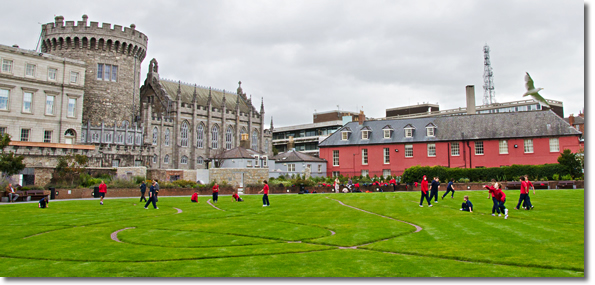 Dublin Castle from the rear gardens (including the Round Tower and Chapel Royal).
Dublin Castle from the rear gardens (including the Round Tower and Chapel Royal).
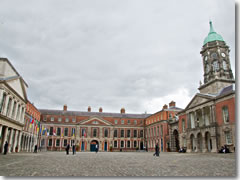
The Dublin Castle courtyard. While "Dublin Castle" sounds all nice and medievally Irish—and indeed this was the site of the first earthen fort established by the Vikings in AD 1204—don't come expecting a classic, craggy stone castle.
Dublin Castle today consists mainly of the 17th- and 18th-century State Apartments and assembly rooms that served the ruling British government for 700 years.
The remaining Viking and Norman bits of Dublin Castle
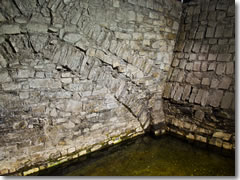
A bit of medieval Dublin surviving underneath the castle: part of a (walled up) bridge, moat, and castle tower wall. That said, on the required tours you do get to see a few sections of more ancient lineage. This included the 13th-century Record Tower, from the Norman era, and several early medieval bits still preserved in the areas underneath the more recent buildings.
These are collectively called the Medieval Undercroft. You'll see the foundations of that original Viking bunker, bits of medieval city wall, and the only remaining tumbledown stretch of the city's original Viking wall—as well as the walled-up arch of a bridge over what was once the long-vanished River Poddle, re-routed to become the castle moat.
The royal chapel
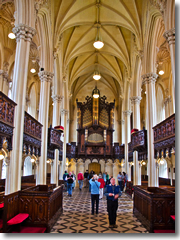
The Royal Chapel in Dublin Castle. While you're in the castle complex, pop into the Chapel Royal, a Gothic Revivial bit of frippery featuring the coats of arms of Dublin's various Justiciars, Lord Deputies, and Lord Lieutenants. These sigils start with very first ruler of Dublin, Hugh de Lacy—who was installed in 1172, two years after the Norman invasion—to the very last Lord Liuetenant under Briritsh rule, Edmund FitzAlan-Hoaward (27 April, 1921 – 6 December, 1922).
The builders of the chapel must have known independence was coming, because the Viscount FitzAlan's crest occupies the last possible space left for this purpose.
Tips
- Planning your time in Dublin Castle: Though you can wander into the courtyard at will, to get into most buildings you need to take one of the escorted tours.
- Tours of Dublin Castle: Tours last about 45 minutes—though if the State Apartments are closed (as they often are for government purposes), the shortened tour takes about 30 minutes.
- Commerical tours that visit Dublin Castle: Take a tour that includes a stop at Dublin Castle with our partners at Viator.com:
- Dublin Pass: You can get into Dublin Castle for free using the Dublin Pass.


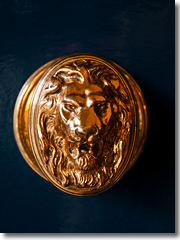
A doorknob at Dublin Castle.
Related Articles |
Related Partners
|
This article was by Reid Bramblett and last updated in February 2012.
All information was accurate at the time.
Copyright © 1998–2013 by Reid Bramblett. Author: Reid Bramblett.
Palace St./Castle St. (off Dame St.)
Tel.+353-(0)1/645-8813
www.dublincastle.ie
OPEN
Mon–Sat 10am–4:45pm
Sun noon–4:45pm
Required tours: Every 20-25 min (last 45-min.)
ADMISSION
€4.50 for a tour of the Royal Apartments and Medieval Undercroft
Dublin Pass: Yes (free)
TRANSPORT
Bus: 49, 56A, 77, 77A, 77B, 123
LUAS: The Four Courts, St. Stephen's Green
